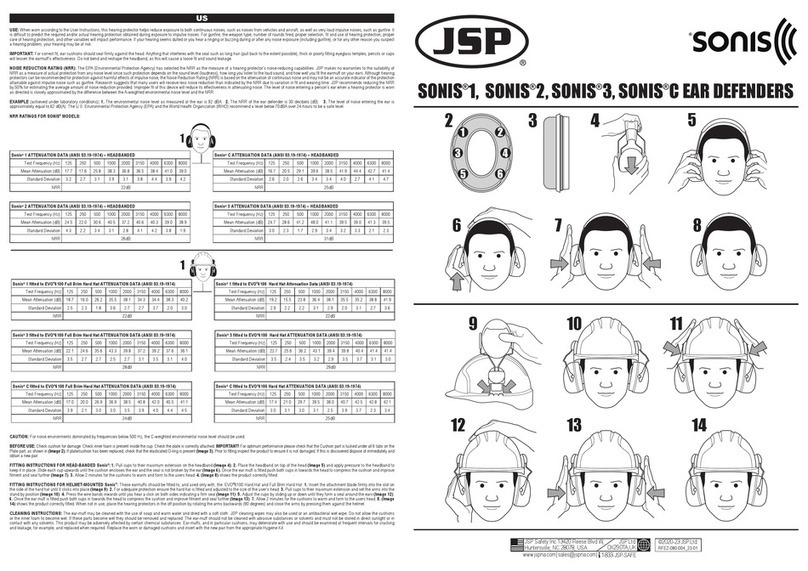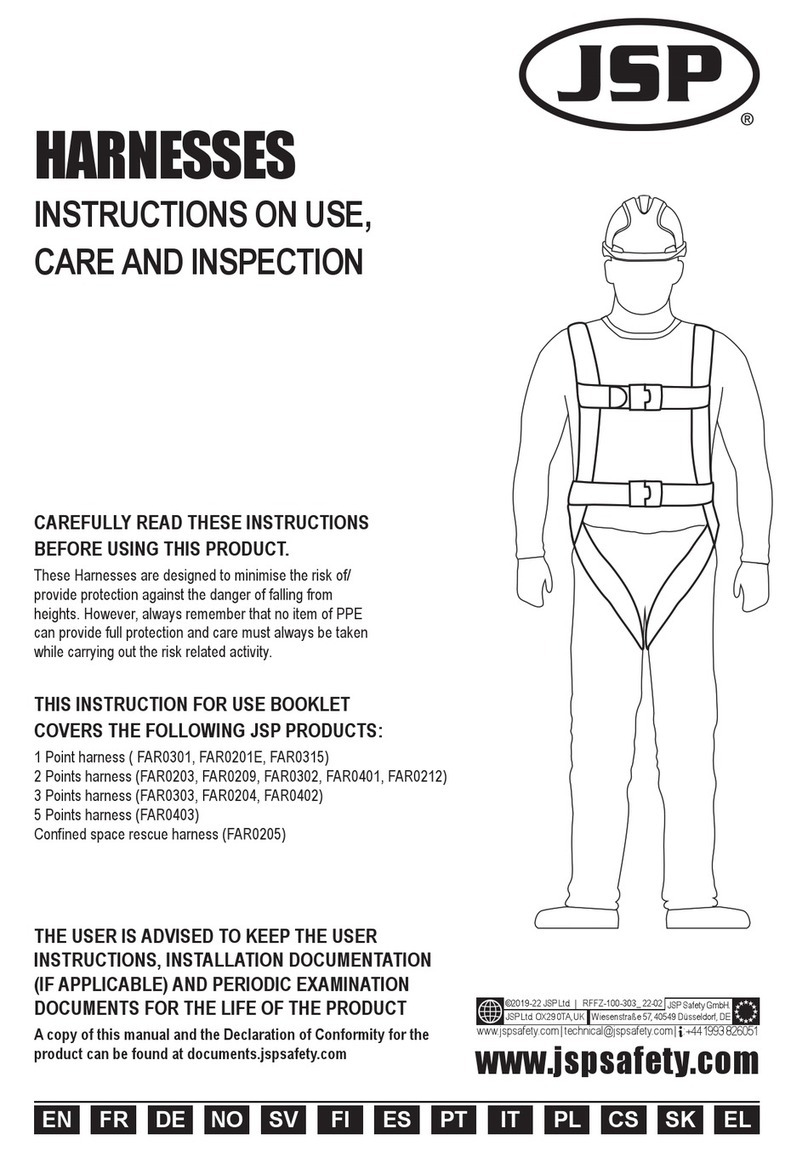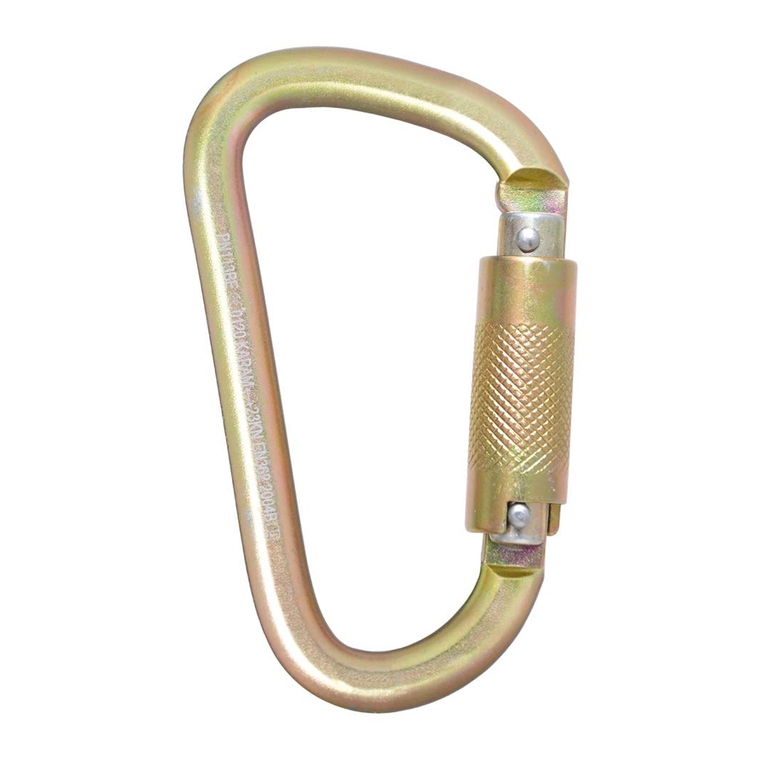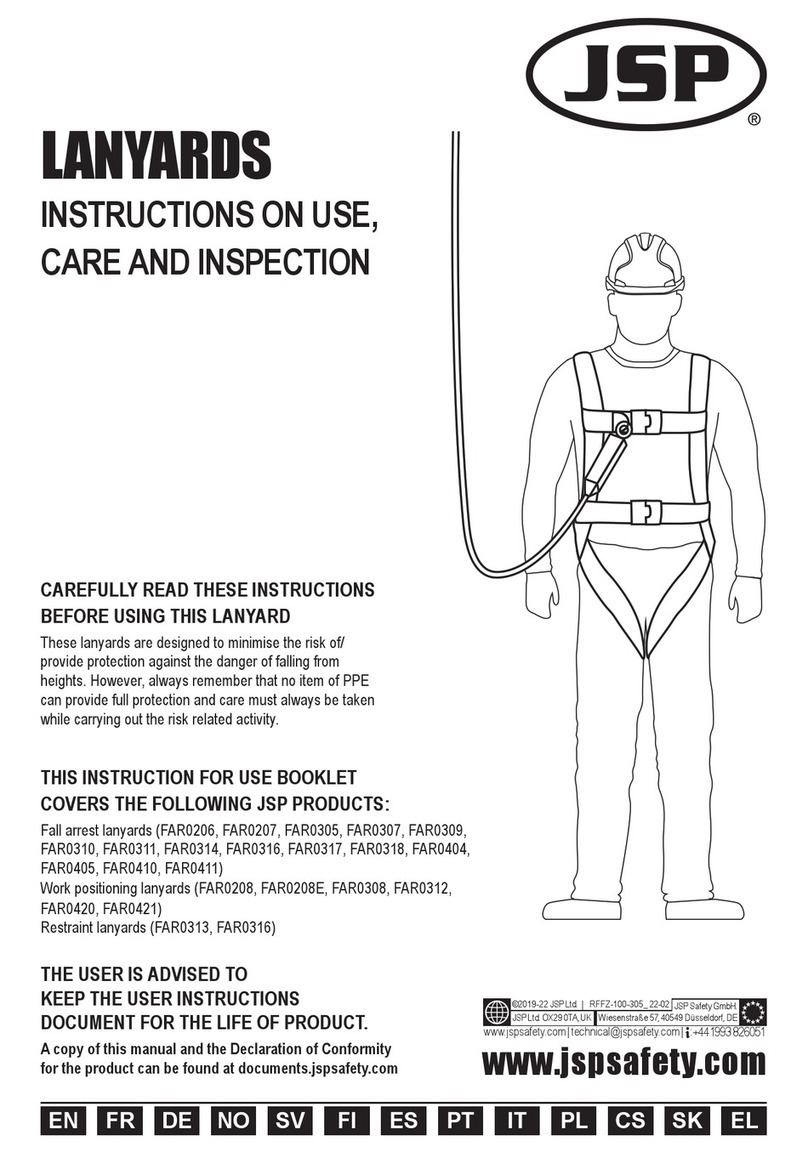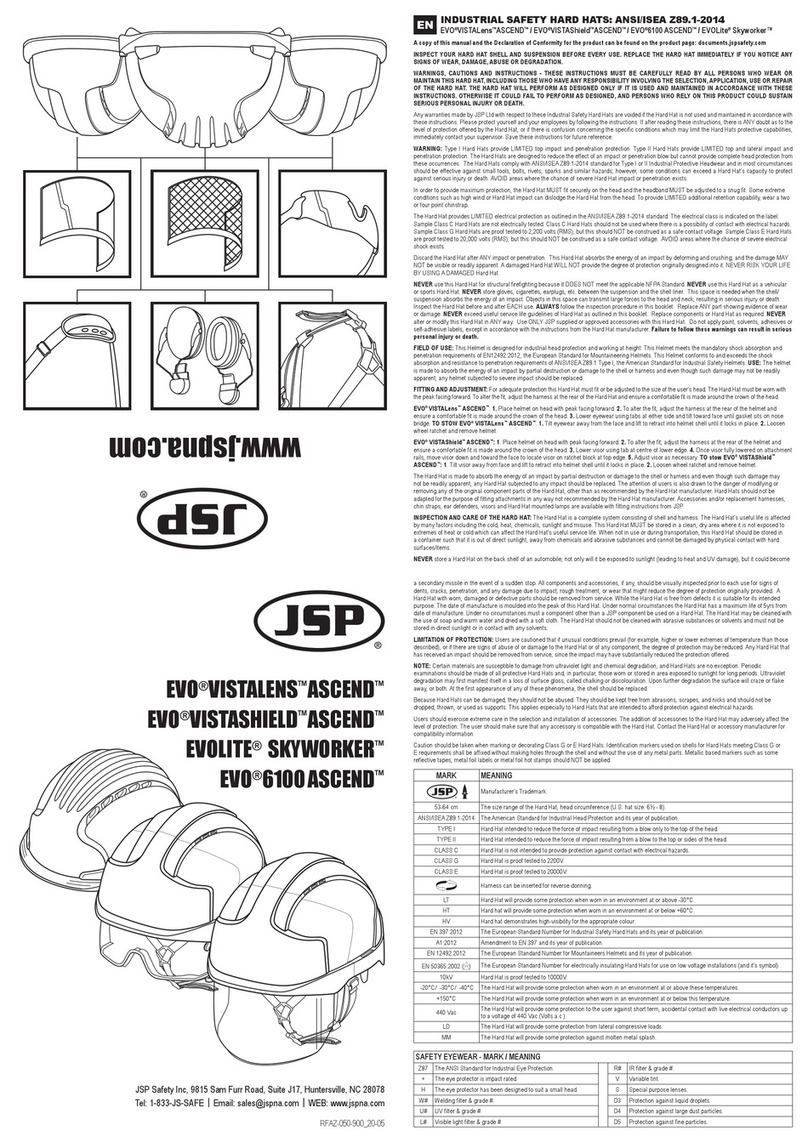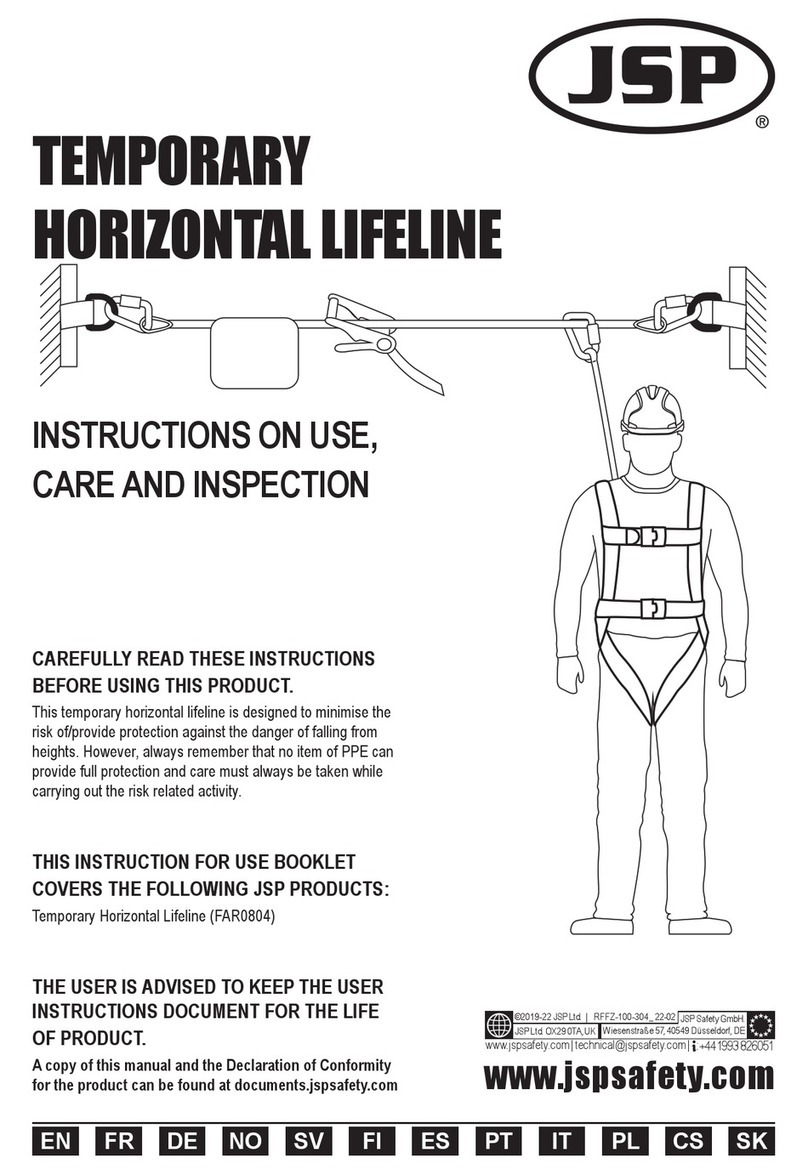
10
des connecteurs si nécessaire. Veillez à ce que le connecteur soit parfaitement verrouillé.
3: Le connecteur en suspension peut à présent être utilisé comme point d’ancrage. À ce point, vous pouvez attacher au
choix un antichute à rappel automatique conforme EN 360, une ligne d’assurage pour un antichute coulissant conforme
EN 353-2 ou le crochet d’attache de la longe.
Remarque : toute utilisation de l’élingue d’ancrage pour lever des équipements ou des personnels est prohibée,
celle-ci doit servir exclusivement à la protection antichute.
LIMITATIONS
• L’élingue d’ancrage a passé avec succès les essais de la norme EN 795 (Type B) et doit être utilisée par une seule
personne exclusivement.
• Ne pas utiliser si votre état de santé risque de compromettre votre sécurité, tant en situation d’utilisation normale qu’en
situation d’urgence.
• L’équipement doit être utilisé uniquement par un personnel compétent et formé à son utilisation en toute sécurité.
• Un plan de sauvetage doit être en place prévoyant toutes les situations d’urgence susceptibles de survenir pendant le
travail.
• Ne pas modier l’équipement par des ajouts ou des altérations sans l’accord écrit préalable du fabricant.
• Ne pas utiliser l’équipement au-delà de ses limitations, ni pour aucun autre usage que celui pour lequel il a été prévu.
• Le produit doit être la propriété personnelle de son utilisateur.
• Veillez à la compatibilité des éléments d’équipement lorsqu’ils sont assemblés pour former un système.
• Il est important de s’wassurer avant l’utilisation de l’absence de tout danger pouvant survenir d’une association entre
équipements, dans laquelle la sécurité fonctionnelle d’un des éléments est compromise ou gênée par celle d’un autre.
• Contrôlez le produit avant toute utilisation pour vérier qu’il est en bon état de service et qu’il fonctionne correctement.
• Retirez du service tout équipement pour lequel un doute existe quant à sa sécurité fonctionnelle, ou s’il est intervenu
pour arrêter une chute. Ne pas le réutiliser tant que conrmation n’a pas été obtenue d’un personnel compétent.
• La résistance structurelle du point d’ancrage doit être supérieure à 12 kN. Contrôlez que la structur e à laquelle
l’élingue d’ancrage est arrimée est exempte de toute arête vive, bord tranchant ou contaminant susceptible de lui
causer des dommages.
• Lorsqu’il est destiné à être utilisé dans un système d’arrêt de chute, il est primordial pour la sécurité que le dispositif
ou le point d’ancrage soit toujours positionné, et les travaux effectués, de telle manière que l’effet de balancier et la
distance potentielle de chute soient limités le plus possible. Veillez à installer les élingues d’ancrage directement au-
dessus de la tête de l’utilisateur chaque fois que possible.
• Lorsqu’il est destiné à être utilisé dans un système d’arrêt de chute, il est primordial pour la sécurité de vérier le tirant
d’air requis sous l’utilisateur sur le lieu de travail, avant chaque utilisation, an d’éviter en cas de chute toute collision
avec le sol ou un autre obstacle sur la trajectoire de chute.
• Soyez conscient des dangers susceptibles d’affecter les performances ou d’entraîner la défaillance de l’équipement,
dont notamment :
• températures extrêmes (inférieures à -150C et supérieures à +500C),
• milieux ambiants agressifs chargés en sable et poussières abrasives, ciment, surfaces brûlantes, ammes nues,
projections de soudure, étincelles, conductivité électrique
• contact avec : arêtes vives, surfaces abrasives, produits chimiques
• Cessez immédiatement toute utilisation du produit si celui-ci a été exposé aux conditions énumérées précédemment
ou s’il a subi une détérioration quelconque, jusqu’à son inspection par un personnel compétent.;
• Le dispositif doit être utilisé comme partie intégrante d’un système d’arrêt de chute, avec limitation par ce système à
6 kN au maximum des forces dynamiques exercées sur l’utilisateur pendant l’arrêt d’une chute.












